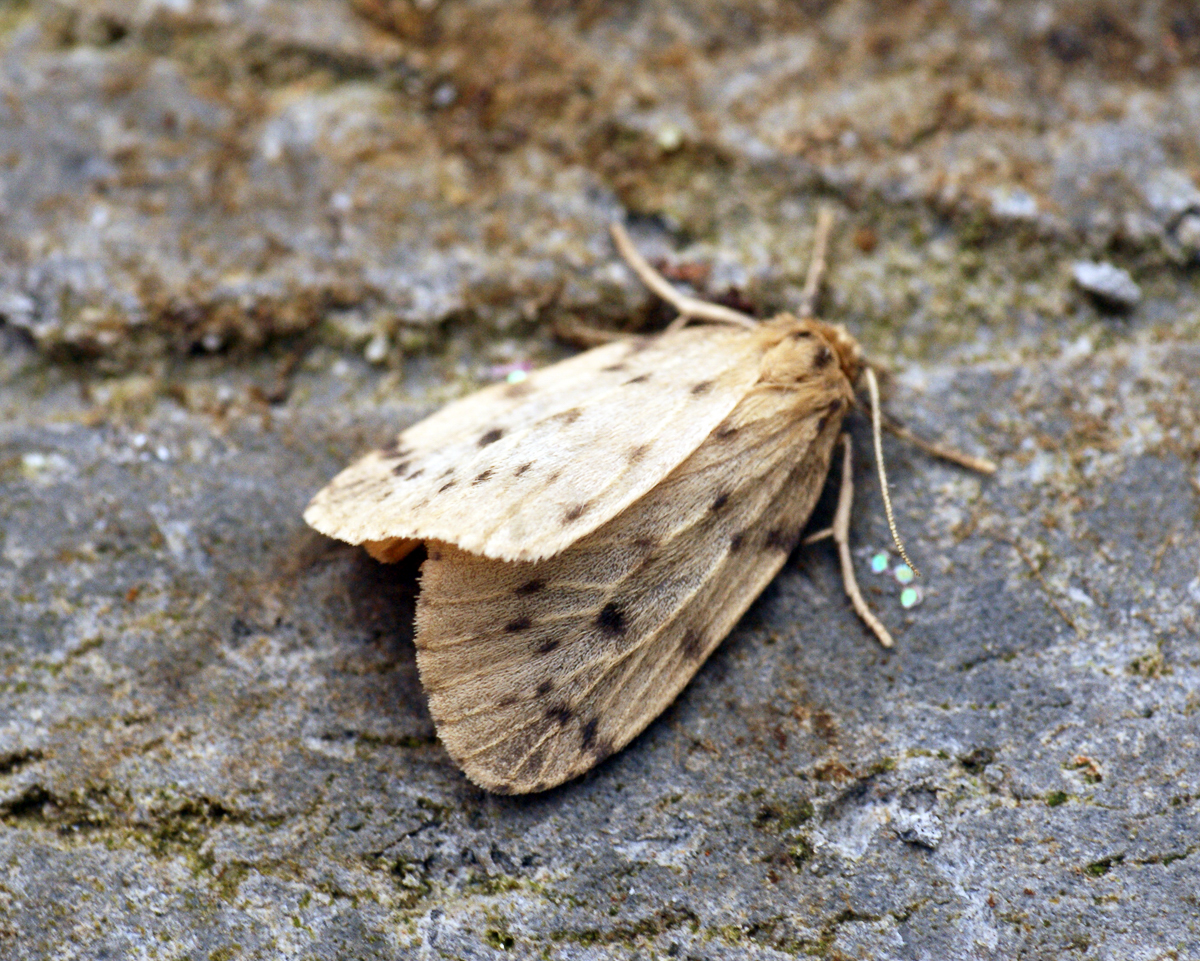
Photo © Ben Sale
Thumatha senex, the round-winged muslin, is a moth of the family Erebidae. It is found in northern and central Europe, the Alps, northern Asia Minor, the Crimea and south-western Siberia.
The wingspan is 15–20 mm. Not unlike Nudaria mundana ( mundana has less-rounded forewings and a more transparent appearance, less obvious spots). The central spot at the apex of the cell distinct; a larger shadowy spot at the middle of the costa, and before the marginal area of the forewing a row of spots which are especially distinct in the costal region. Another curved row of spots bounds the basal third of the forewing. The wings are sparsely scaled, giving them a thin, papery appearance.
Adults are on wing from mid-June to mid-August in one generation.
Egg round, yellow. Larva ashy grey, very hairy, with black head. The larvae feed on lichen (especially Peltigera canina) and mosses. Pupa stumpy, dark brown, in a dense hairy cocoon.
The moths fly on damp meadows, and are not rare in their flight-places; they come to the light at night.
Source: Wikipedia
The primary larval foodplants are (Peltigera spp.), algae, Common Pincushion (Dicranoweisia cirrata), lichens, mosses and Silky Wall Feather-moss (Homalothecium sericeum).